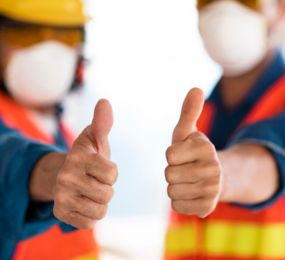The intersection of digitalization and Health, Safety, and Environment (HSE) practices is revolutionizing industries worldwide. In an era where technology is rapidly transforming the way we work and interact, its impact on HSE cannot be overstated. This article delves into the evolving landscape of HSE in the digital age, exploring how digitalization is enhancing safety, preserving the environment, and driving efficiency across sectors.
A Digital Transformation
The rise of digitalization has given birth to a plethora of technologies, from the Internet of Things (IoT) to Artificial Intelligence (AI) and Big Data analytics. These technologies are not only transforming industries but also offering innovative solutions to age-old HSE challenges.
One of the most significant advantages of digitalization in HSE is real-time monitoring. Sensors and connected devices collect data from various points within industrial operations. This data provides real-time insights into safety and environmental conditions. For example, in manufacturing plants, sensors can detect hazardous conditions and trigger automatic shutdowns, reducing the risk to workers and the environment.
Moreover, predictive analytics powered by AI algorithms can forecast potential safety issues. By analyzing historical data, AI can identify patterns that may lead to accidents, equipment failures, or environmental incidents. This enables proactive intervention, preventing accidents before they occur.
Enhancing Worker Safety
Digitalization enhances worker safety in numerous ways. Wearable devices equipped with sensors can monitor workers' vital signs and environmental conditions. If a worker's vital signs indicate distress or exposure to hazardous substances, the device can send an alert, enabling swift rescue efforts.
Furthermore, Augmented Reality (AR) and Virtual Reality (VR) technologies are being used for HSE training and simulations. Workers can undergo realistic safety training in a virtual environment, preparing them for potential hazards they might encounter in their jobs.
Environmental Sustainability
Digitalization is not only about safety but also about preserving the environment. IoT sensors and data analytics enable industries to monitor their environmental impact in real time. For instance, in the oil and gas sector, sensors placed in drilling operations can detect oil spills or gas leaks immediately, allowing for rapid response and containment.
Additionally, digitalization supports the integration of renewable energy sources, which are vital for reducing carbon emissions. Smart grids, powered by digital technologies, optimize energy distribution, incorporating energy from solar and wind sources seamlessly.
The Way Forward
Digitalization is reshaping the future of HSE by offering innovative solutions to age-old challenges. By harnessing the power of real-time monitoring, predictive analytics, wearable devices, and IoT sensors, industries can enhance worker safety, protect the environment, and maintain regulatory compliance.
As technology continues to advance, the synergy between digitalization and HSE will deepen. Organizations that embrace this transformation will not only create safer and more sustainable workplaces but also gain a competitive edge in an increasingly digital world. The future of HSE is digital, and it's a future that promises improved safety, environmental stewardship, and operational excellence.
To register or learn more about the Forum please check here: https://www.leadventgrp.com/events/hse-excellence-for-energy-and-utilities/details
For more information and group participation, contact us: [email protected]
















